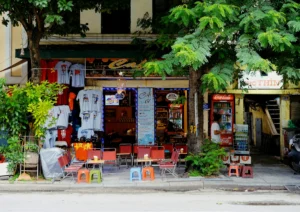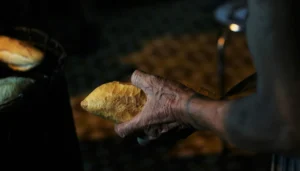The Spiritual Heart: Temples of Laos
Wat Xieng Thong: The Golden City Monastery
Located in Luang Prabang, Wat Xieng Thong is one of the most important temples in Laos. Built in 1560, it exemplifies classic Lao architecture with its sweeping two-tiered roof and intricate mosaics. The “Tree of Life” mosaic, which adorns the rear wall of the temple, is particularly breathtaking. This temple not only serves as a place of worship but also as a symbol of Lao artistic and spiritual heritage.
Pha That Luang: The Great Stupa
Pha That Luang, situated in Vientiane, is considered the most significant national monument in Laos. This large, gold-covered stupa stands as a symbol of Lao sovereignty and Buddhism. Believed to have been originally built in the 3rd century to house a breastbone of Buddha, it has undergone numerous reconstructions. The stupa’s architectural design reflects a fusion of traditional Lao and Khmer styles, making it a must-visit site for understanding the country’s religious devotion.
Wat Si Saket: The Oldest Surviving Temple
Wat Si Saket, also located in Vientiane, is renowned for its unique architecture and historical significance. Built in 1818, it is the oldest temple in Laos to have survived the Siamese–Lao war. The temple features a cloister wall housing thousands of tiny Buddha images and rows of seated Buddhas. The distinct architectural style with its five-tiered roof and beautiful frescoes provides a serene atmosphere for reflection and prayer.
Traditional Festivals: A Celebration of Lao Culture
Boun Pi Mai: Lao New Year
Boun Pi Mai, or Lao New Year, is the most significant festival in Laos, celebrated in mid-April. The festival spans three days and is marked by a series of religious and cultural events. Temples are crowded with locals performing merit-making rituals, and water-splashing ceremonies are common, symbolizing purification and renewal. Streets come alive with parades, traditional music, and dances, offering visitors a vibrant insight into Lao culture and traditions.
That Luang Festival: Honoring the Great Stupa
The That Luang Festival, held in November, is the grandest religious festival in Vientiane. It honors the Pha That Luang stupa and attracts pilgrims from all over the country. The festival includes a grand procession, almsgiving ceremonies, and traditional Lao music and dance performances. This event is a profound expression of national pride and religious fervor, reflecting the deep connection between the Lao people and their spiritual heritage.

Cultural Practices and Craftsmanship
Textile Weaving: The Art of Lao Silk
Textile weaving is a cherished tradition in Laos, with techniques passed down through generations. Lao silk is known for its quality and intricate patterns, often incorporating symbolic motifs that tell stories of heritage and beliefs. Villages like Ban Phanom near Luang Prabang are renowned for their weaving communities, where visitors can witness artisans at work and purchase exquisite handwoven textiles.
Baci Ceremony: Binding Souls
The Baci ceremony is a traditional ritual that involves the tying of white cotton strings around a person’s wrist to preserve good luck and offer blessings. It is commonly performed during important events such as weddings, births, and Lao New Year. The ceremony reflects the Lao belief in the kwan, or spirit, and its importance in maintaining harmony and balance in life. Participating in or observing a Baci ceremony provides a deep understanding of Lao spiritual practices and communal values.
Exploring Historical Sites
The Plain of Jars: An Archaeological Mystery
Located in the Xieng Khouang Plateau, the Plain of Jars is one of Laos’ most intriguing archaeological sites. Scattered across the landscape are thousands of large stone jars, dating back to the Iron Age. The purpose of these jars remains a mystery, with theories ranging from burial practices to storage. The site is not only significant for its historical value but also offers breathtaking views of the surrounding countryside.
Vat Phou: The Ancient Khmer Temple Complex
Vat Phou, a UNESCO World Heritage site, is an ancient Khmer temple complex located in southern Laos. Built between the 5th and 15th centuries, the site is aligned along an axis that extends to the sacred mountain of Phou Kao. The temple’s layout and design reflect the spiritual and symbolic relationship between nature and the built environment. Exploring Vat Phou provides a fascinating glimpse into the pre-Angkorian civilization and its religious practices.
Living Traditions: Everyday Life in Laos
Morning Alms Giving: A Daily Ritual
In cities like Luang Prabang, the daily morning alms giving ceremony is a deeply revered tradition. At dawn, Buddhist monks clad in saffron robes walk through the streets to collect alms from the local people, who offer sticky rice and other food items. This ritual symbolizes humility, generosity, and the interdependence between the monastic community and laypeople. Visitors can respectfully observe or participate in this serene and spiritual practice.
Lao Cuisine: A Culinary Journey
Lao cuisine is an integral part of the country’s cultural heritage. Dishes such as larb (a minced meat salad), tam mak hoong (spicy green papaya salad), and khao niao (sticky rice) are staples in Lao diets. Visiting local markets and food stalls offers an authentic taste of Lao flavors and ingredients. Participating in a cooking class can also be a delightful way to learn about traditional cooking techniques and recipes.


